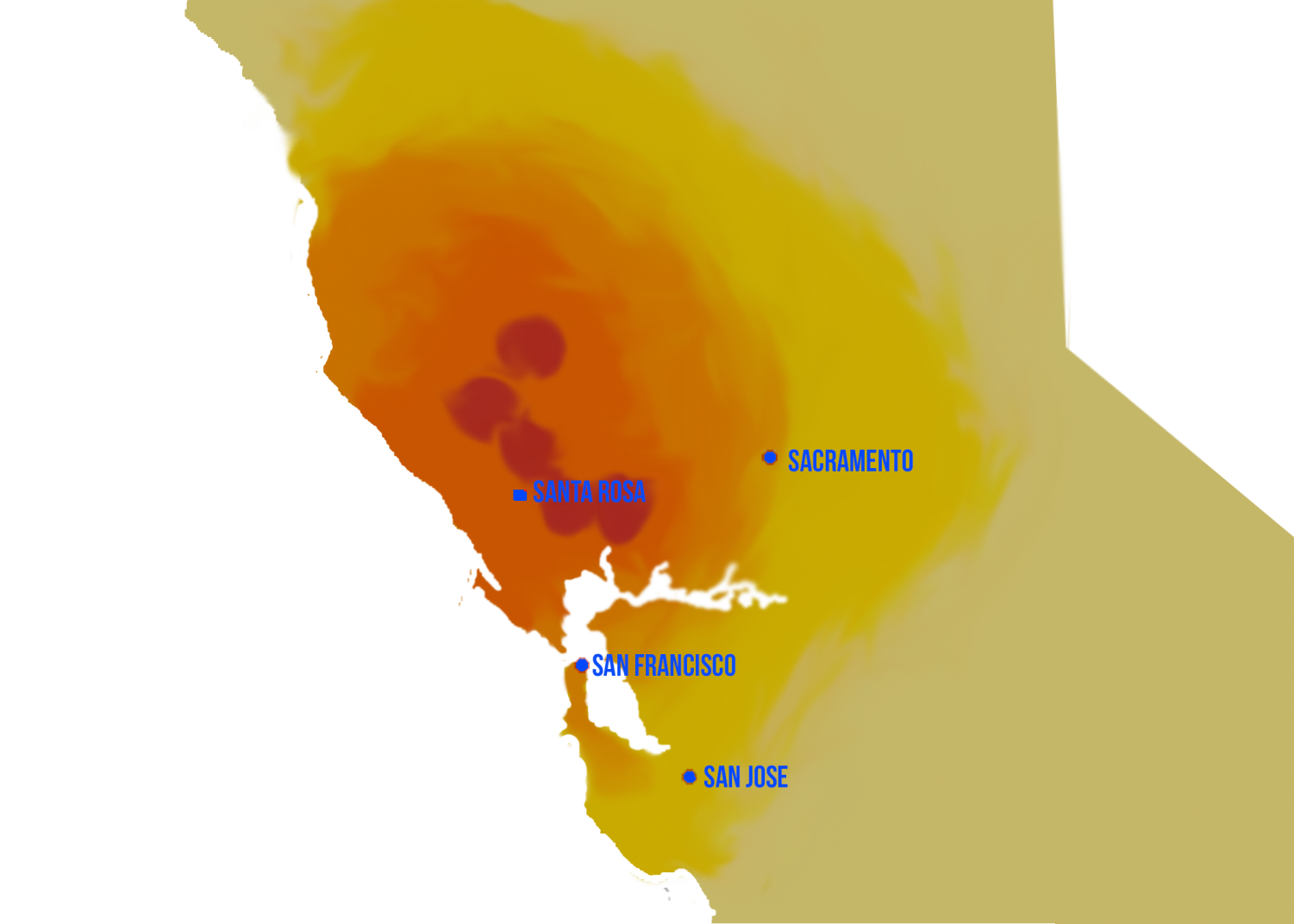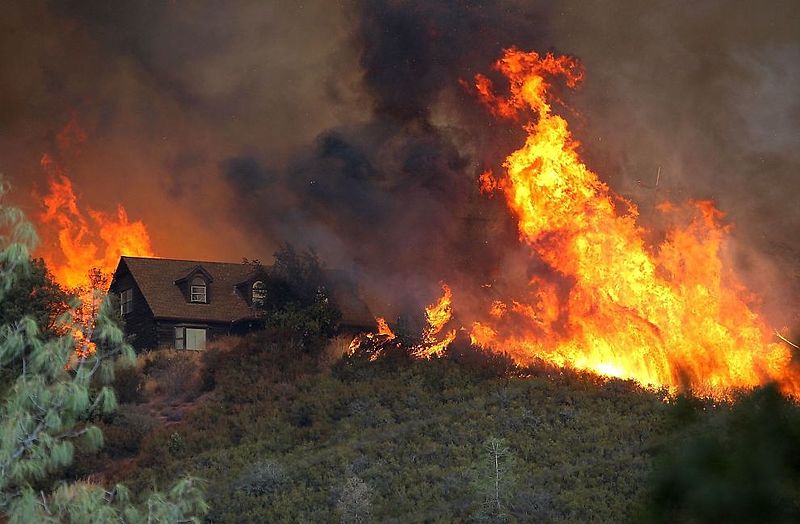Wildfires blaze through Northern California
Black and orange. Colors that used to represent a local baseball team have begun to represent death and destruction in recent weeks. As some of California’s greatest wildfires rage on, all that was left is stark black ash and blinding orange flames. Since the beginning of October, almost 8,000 fires have broken out across Northern California, destroying billions of dollars of property, killing 42 residents and displacing thousands more.
The fires broke out on Oct. 8, just days after officials issued a heat and wind warning. A total of 12 separate fires raged across Northern California, ranging from Napa Valley to Orange County. The four most prominent fires were the Napa County’s Atlas, Oroville Cherokee, Mendocino County’s Potter and Sonoma County’s Tubbs fires. These fires burned in Napa County, Oroville, Mendocino County and Sonoma County, respectively. As these fires spread over Northern California, they collectively burned down almost 250,000 acres of land and 8,000 buildings. No single fire, however, was as destructive as the Tubbs fire, which destroyed 5,300 buildings alone, marking it the single most devastating wildfire in California history.

Soon after the fires intensified, California Governor Jerry Brown declared a state of emergency, and called on President Donald Trump for a major disaster declaration. Soon after, on Oct. 10, the President approved, and sent federal funding and aid to fight the fires. The fire departments of the respective cities also sent 10,000 firefighters to battle the flames, and even received help from as far away as Canada and Australia, but strong winds had already caused the fire to spread beyond control. Several firefighting planes, including the world’s only Boeing 747 tanker, were called in to help the firemen stop the flames. As the fire progressed, over 90,000 residents were told to evacuate, with police and fire departments helping residents escape before the fires could reach them. Many, however, were not fast enough, and hospitals have recorded at least 42 deaths and 180 injuries in the past few weeks.
Many residents of Northern California have also lost their access to power and gas. The Pacific Gas and Electric Company (PG&E) has reported that almost 390,000 residents have lost their access to basic electricity, while 42,000 residents have lost their access to gas. As of Oct. 14, PG&E had restored 99 percent of electricity and gas, and since then have successfully restored gas and electricity to all affected households.
Not only have the fires affected regions such as Napa Valley and Sonoma County, but the smoke and ash has carried into San Francisco and other parts of the Bay Area, including San Jose. Citizens of San Francisco were faced with a thick smog, and many cases of hospitalization due to smoke inhalation were reported. Although not as severe as San Francisco, smoke in San Jose caused the city to declare an air quality warning, and citizens were recommended to stay indoors whenever possible. At Lynbrook, all outdoor sports games and practices were cancelled due to the poor air quality, including the regional Tournament of Bands. During lunch and brunch, students were advised to eat in the library or gym to avoid breathing in the smoke.
Recently however, firefighters have finally begun to put out the fires. As of Oct. 25, four fires have been fully contained, and the remaining fires are very close to being put out. Smoke in surrounding areas has cleared, and evacuees are returning to their homes, hoping to restart their lives.

Graphic illustration by Srinidhi Seshadri








































































